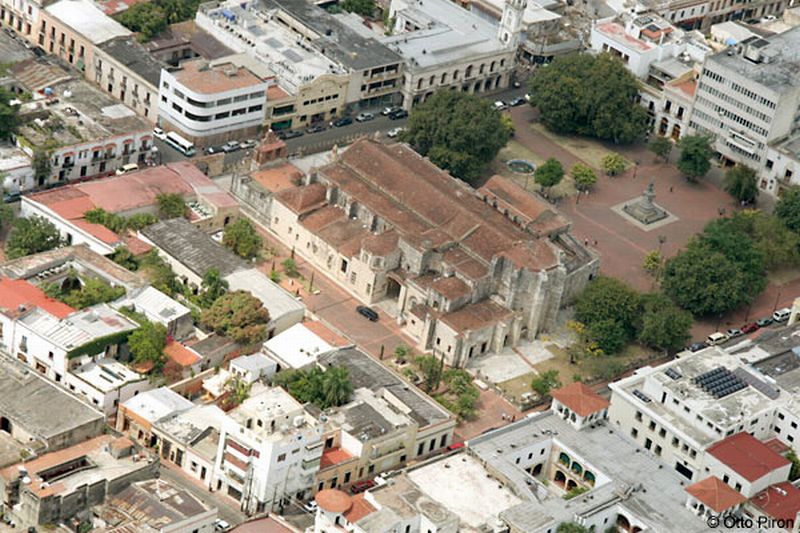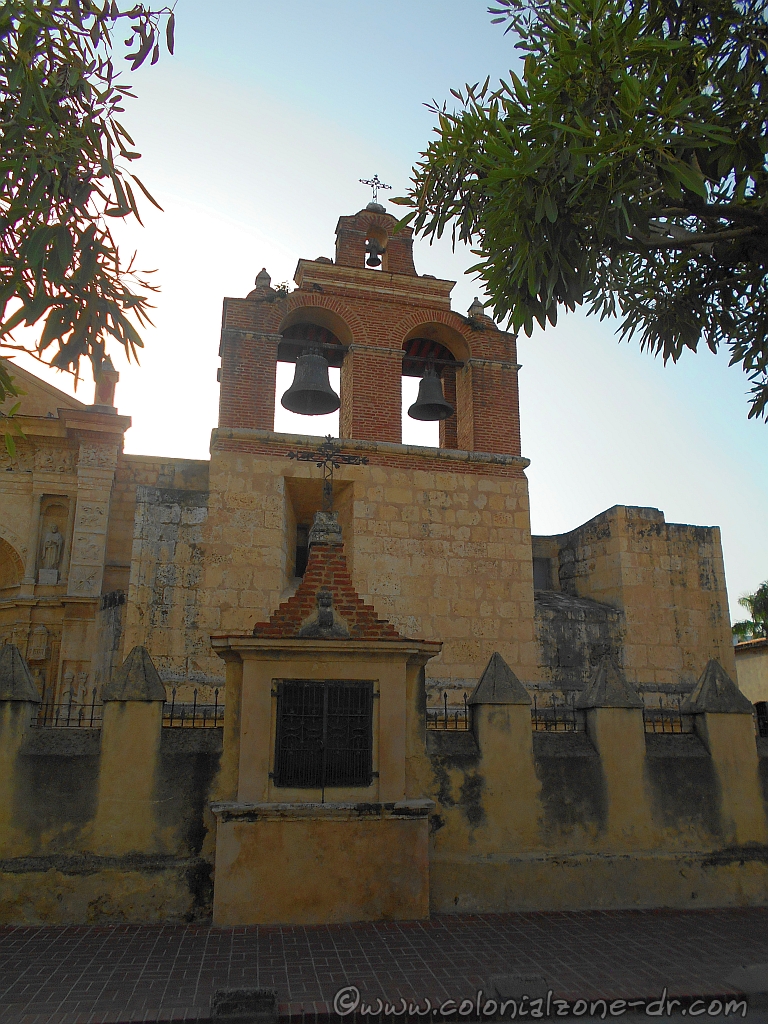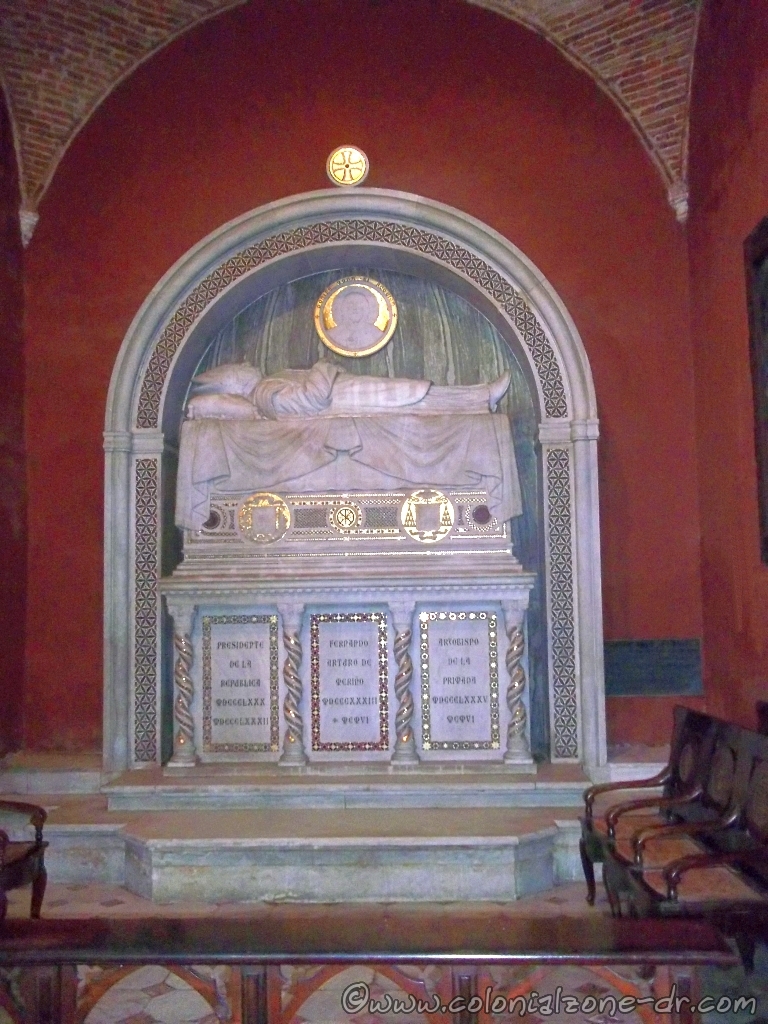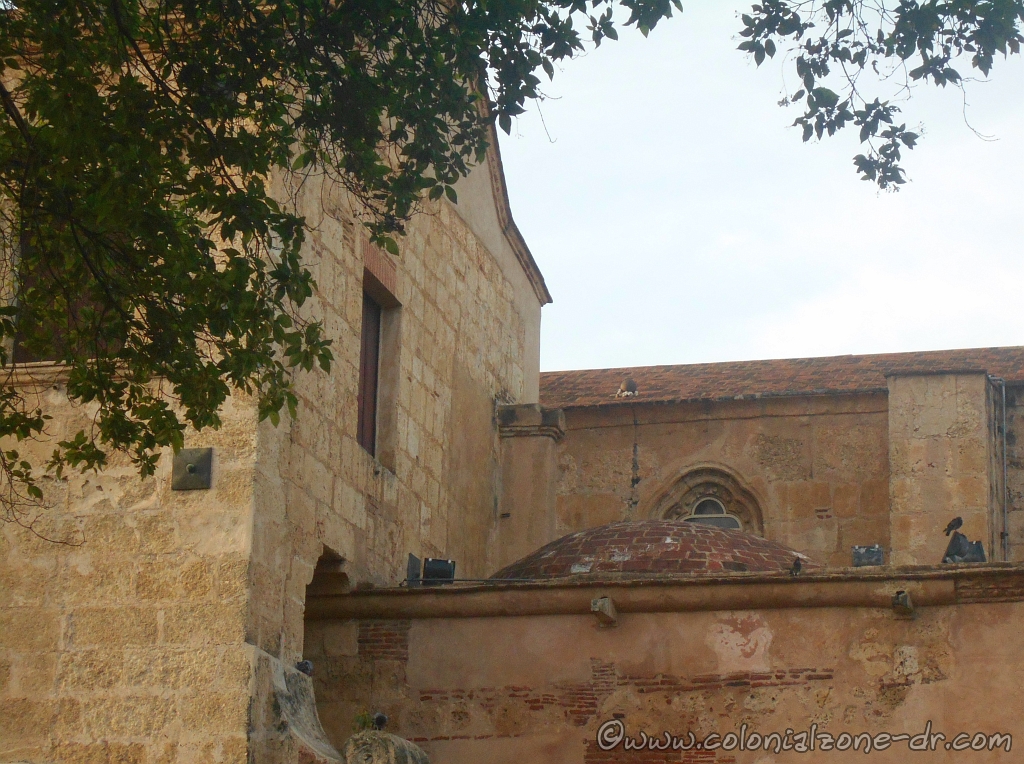Iglesia y El Fuerte de Santa Bárbara / Church and Fort of Santa Barbara
Iglesia de Santa Bárbara / Church of Santa Barbara now known as Catedral Castrense Santa Bárbara de los Hombres de la Mar
The Iglesia and Fuerte of Santa Barbara is one of the oldest churches built within a fort in the colonial period. It is a UNESCO World Historical Site. The church and fort were originally built separately. The church was constructed in 1537 and the fort was built later because the location was very strategic for the protection of the city of Santo Domingo.
La Catedral Castrense Santa Bárbara / Iglesia Santa Barbara | El Fuerte de Santa Bárbara / Fort of Santa Barbara |
La Catedral Castrense Santa Bárbara
On Tuesday February 4, 2020 the newly rescued and restored Iglesia de Santa Barbara became known as Catedral Castrense Santa Bárbara de los Hombres de la Mar, or the Santa Barbara de la Mar Cathedral. The Roman Catholic Church in the Dominican Republic announced that the Church of Santa Bárbara will now officially be the second Cathedral in the Ciudad Colonial. The Santa Barbara Cathedral is now the seat of the newly-named Military Diocese, Diócesis Castrense.
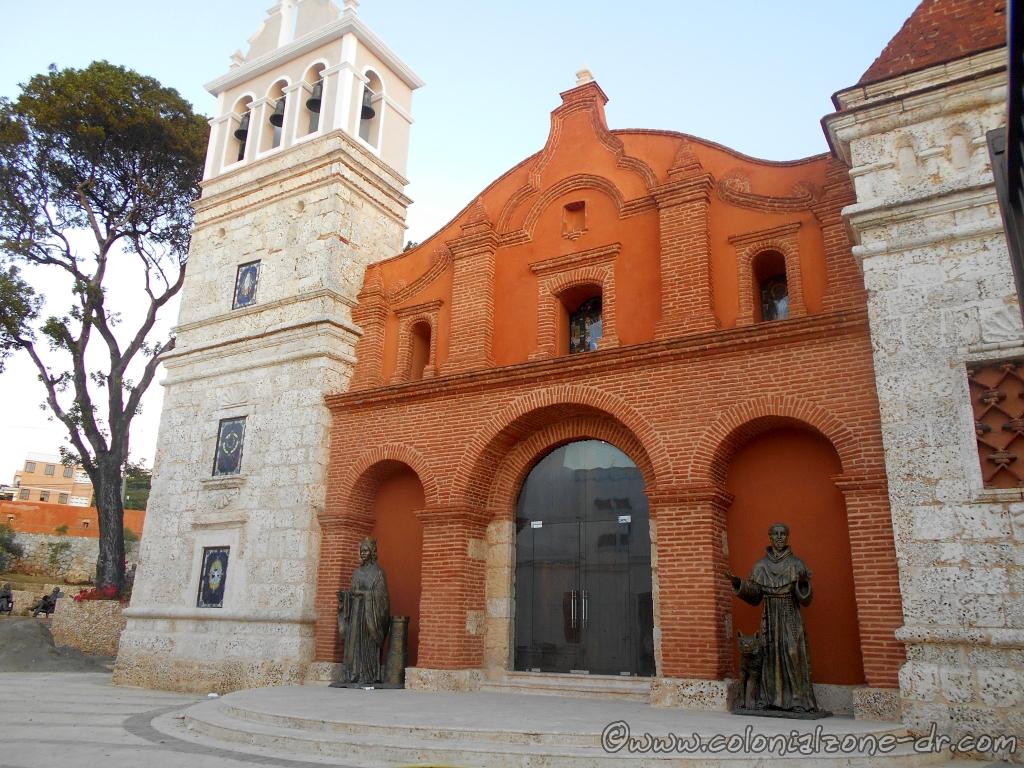
The statues in the front of the newly ordained Cathedral are the martyr Santa Bárbara de Nicomedia Patron Saint of armorers, artillerymen, architects. The second is St. Francis of Assisi the Patron saint of Animals, Merchants & Ecology.
The church is a single long building with five distinct sections, as can be seen from the outside of the building. The original church building was made of royal palm. Later, in 1537, it was rebuilt in stone. The blocks were quarried from this very site as were the stone blocks for many monuments and buildings of the era.
The interior of the church has eight distinct chapels each are from very distinct and are from different eras.

The building has been damaged many times throughout its history. Both the Fuerte and Iglesia were heavily damaged by a hurricane in 1591. Then earthquakes in 1673 and 1684 did extensive damage to the Iglesia. The Pirate Francis Drake did severe damage to the church when he invaded the island in 1586. Each time the church was repaired something new was added to the structure. It is interesting to note that the ceiling of this historical monument is still covered with the original bricks.

The Iglesia Santa Barbara boasts to be the place where Juan Pablo Duarte, The Father of the Nation, was baptized on February 14, 1813.
Interesting stories surrounding the Iglesia and Fort
There are many crypts under the church that recently have been discovered. There are also bones in the walls and a newly discovered cemetery in the Plaza surrounding the church.
“Las Vírgenes de Galindo” / “The Virgins of Galindo” – Three young sisters and their father were massacred in 1822 by Haitian invading forces. – Cesar Nicolás Penson said in his works “Cosas Añejas”
A story about The Restoration of the Iglesia and Fuerte Santa Bárbara on the Colonial Zone News Blog.
El Fuerte de Santa Bárbara / Fort of Santa Barbara

The Fort of Santa Barbara is the only fort with a church inside. The church was built first and later when the fort was built both structures were incorporated together. This is a very unique thing to have a fort and church entwined. The bunker for the fort is attached to the church.
The city of Santo Domingo was a walled city but the north section of the city did not have walls built until 1686. Building the fort in this furthest section of the city was an important step in the fortification of the city.

This fort was part of the third stage of protection for the city. Construction began in the early 1540’s and the final phase was completed in the early 1700’s. It was designed by an Italian builder and a Spanish stone cutter. The fort and church, as with most of the Spanish settlement, was built by slave labor by African and the Indigenous island dwellers.
The end of the 17th century brought constant attacks to all the Antilles Islands. This fort was a bunker facing the mouth of the river Ozama thus giving it an excellent view of the entry port. It was a very strategic location for the strength of the city of Santo Domingo.
Santa Barbara Today

The barrio of Santa Barbara where the fort and church are located is a good place to visit. It is a typical Dominican barrio that has a small town feel. There are some great art works and graffiti covering the walls of many of the buildings. Many of these buildings are in need of repair and are abandoned but the facades on many of these buildings are incredible.

The church, fort and plaza have been completely restored and is open for visiting. The renovation work which has taken many years to complete is beautifully done. The bronze monuments and statues in the Plaza and the Fuerte Santa Barbara are beautiful. The interior of the church, now officially is a Cathedral, is amazing. The stained glass windows, the statues and adornments inside the church and the chapels are a must see. This place is a place that everyone needs to visit when you are in the Colonial Zone.
Here is a picture that was taken February 17, 2019 of the renovation work being done. It is looking great.

If you visit Santa Barbara make sure to climb up the ramp to the top of the shooting wall of the Fuerte Santa Barbara. The wall is lined with cannons and in the center is the giant statue of Saint Francis of Assisi. The catwalk along the wall is easy to climb and the side of the walk towards the river is blocked off. There is a very nice view of the Colonial City of Santo Domingo and the Rio Ozama from the top of the fort wall.

Location
: From Calle el Conde go south up Calle Isabel la Católica or Calle Arzobispo Meriño (both of these streets lead to this monument). Walk about 6 blocks almost to Av. Mella at the far end of the walled city, Colonial Zone.
Contact -809-682-3307


